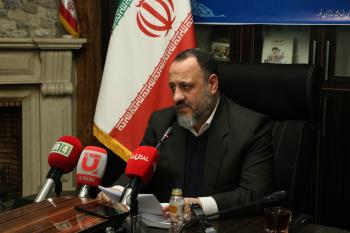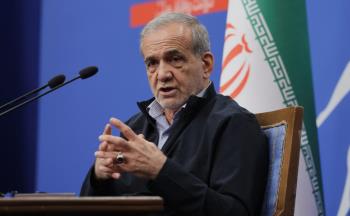Alwaght- The Israeli regime has always been struggling to introduce Palestine to the world as the promised land of the Jews, whose immigration to the Palestinian territories has been one of the most crucial ways for the founders of the Israeli regime and its later leaders to establish and bolster a Jewish state in the West Asia region.
At the same time, this regime dreams of an outlook for its future in which the settlers are not posed to such challenges as unemployment and insecurity. Such an outlook is striven after by paving the way for investment, guaranteed high-quality education, and maximum welfare.
But several military adventures against the neighboring countries, including launching several wars against Gaza Strip and neighboring Lebanon and, deeply cracked the Israeli strategy and mindset. During and even after the 51-Day War against Gaza Strip in 2014, the Israeli settlers in various cities stayed out of their homes especially in the government-provided shelters due to a strong feeling of insecurity.
At the same days of the war, an Israeli polling institute conducted a poll on 300 educated young immigrants to the Israeli regime, coming up with considerable results: 6 out of 10 immigrants to the occupied territories were considering returning to their home countries.
The figures suggest that a major number of the Jews are having difficulty getting into the job market. The Foreign Policy website in a report, built on the data earned from the Israel Immigration Office, suggested that at best about 750,000 Israelis, equaling over 10 percent of the Israeli population, live abroad. The Haaretz newspaper in a report maintained that over one-thirds of the settlers in the occupied territories think about abandoning the Israeli regime. The daily also added that the willingness is much higher in the young people compared to other walks of life.
Beside the reverse migration challenge, the Israeli officials have to cope with the considerably reduced immigration to the occupied territories. Tel Aviv needs ways to speed up inflow of immigrants. To this end, it persistently needs a degree of threats posed to the Jews of the world to preserve the comparative advantage of life in the Israeli regime. This aim is mainly achieved through exploitation of the crisis in different countries that allows the Israeli regime to spread terror and concerns among the Jews of the crisis-hit states. This policy in many cases yields results as it forces the Jews to leave for the occupied territories. After all, Tel Aviv needs population as its illigal settlement projects continue to expand.
Israeli officials have been implementing a number of plans all meant to incentivize Jews in different parts of the world to migrate to the occupied Palestine as a counteraction to the reverse migration becoming a constant trend day by day. To this end, 100 million Shekels ($24 million) have been allocated to encourage the Jews to immigrate to the Israeli regime.
Additionally, Masa Israel Journey project, launched in 2004 by the prime minister’s office in association with The Jewish Agency with a budget of $10 million, aims at absorbing 20,000 Jewish students annually for education in the Israeli regime, with one semester expenditure paid by the government. Moreover, a policy to encourage the foreign workers to convert to Judaism beside approving easier laws for taking in immigrants is another way to counter reverse migration. Despite the fact that the law only recognizes people as Jews who are born from Jewish mothers, the Israeli officials are seeking ways to allow non-Jews to turn Jew through circumventing the firm Judaism laws.
There are no accurate statistics about the reverse migration, especially that many leave the occupied territories illegally. According to the statistical authorities, reverse migrants are those who remain out of the Israeli regime for over a year, excluding the Israeli students studying abroad. Reports put the number of the reverse migrants up to the end of 1993 at 800,471 annually. If the number of the immigrants to the occupied territories is 2.3 million, then the reverse migration percentage is 20 percent. This number was 12 percent in the mid-70s. From the mid-70s, especially after the 1973 Israeli-Arab war, the number of reverse migrants rose to 11,000 between 1975 and 1979 in comparison to the 5,400 between 1973 and 1974. The first intifada in the West Bank and Gaza effectively prompted such immigration out of the Israeli regime. Only in the first year of the uprising, 14,600 Jews left the occupied Palestine.
Studies show that the Russian Jews account for the largest community of the immigrants, but are suffering from racism, low income and living standards, and imagine no bright future there. The reverse migration of the Russian Jews to their motherland or the Western countries seriously questions the viability of the immigrant absorption strategies by Tel Aviv officials. Many of them reportedly keep their properties in Moscow and St. Petersburg, and manage them from the Israeli regime and their children are not recognized as Israeli nationals. Some Russian immigrants have been unsuccessful in doing business in the occupied Palestine and were made to departure. Many others assert that their immigration's only drive is to receive Israeli citizenship.
Another factor behind Jews reverse migration is lack of a sense attachment by many Israeli citizens. Naturally, the Jews stay in the Israeli regime attracted by initial promises of welfare. So any event that cause them financial stress and costly stay will urge them to reverse migrate. Lack of historical roots is an additional factor. Aside from a small number of the Israelis who headed to the occupied territories before establishment of Israeli regime, 90 percent of the Israeli population entered Palestine as immigration trend was on its peak in the 1960s and 1970s. Historical roots non-existence heavily overshadows the settlers' understanding of identity and nationality and provokes reverse migration at the time of security-challenging incidents. Furthermore, the region is crisis-hit and this well provides the settlers to leave.
And the last drive for reverse migration is the idle pledges of high security and economic prosperity made to the potential Jewish immigrants who see otherwise when they arrive in the Israeli regime and live for some time but choose leaving in case of critical times, despite tough departure conditions.
All in all, the Israeli regime’s future is jeopardized by the reverse migration issue which is on a collision course with the Israeli policy of global Jewish race attraction to the occupied territories. It damages the desired demographic composition mainly in favor the Palestinians. This trend questions success of the population enlargement plans.



























